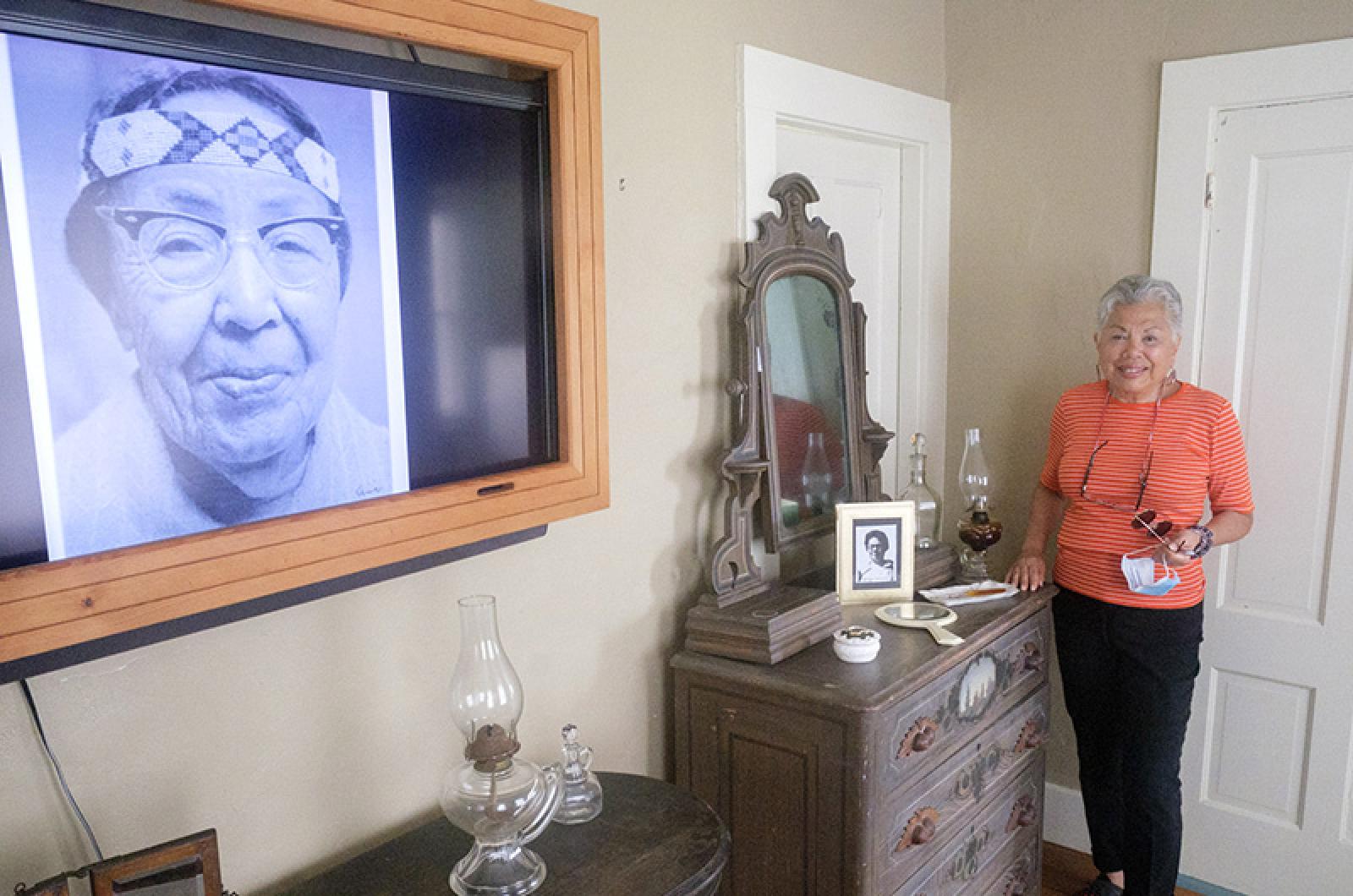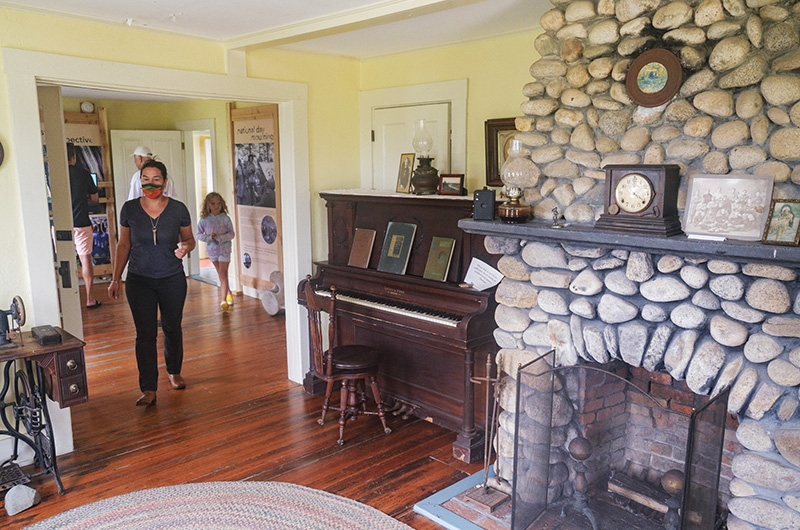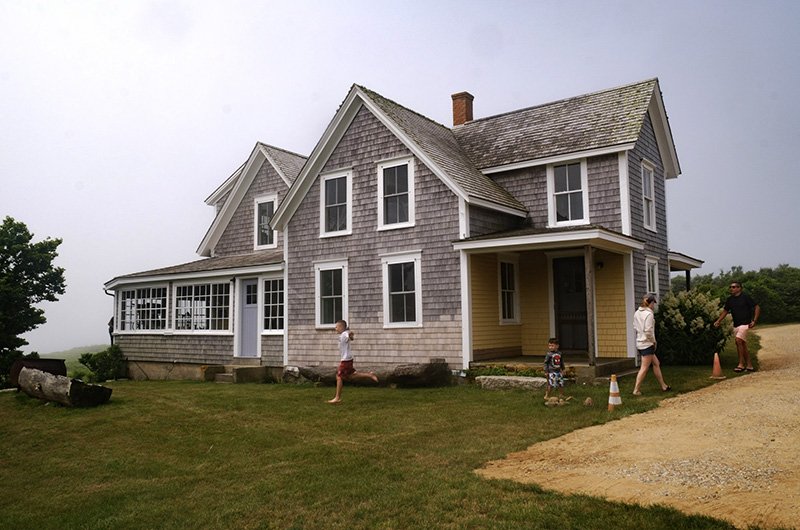For Jade Araujo, serving as a docent at the Aquinnah Wampanoag Indian Museum offered an opportunity to deepen her understanding of her own heritage.
“I am Wampanoag, and I really wanted to learn more about my culture and its history,” she said. “I thought this would be the best way to do that.”
Ms. Araujo will be giving tours this summer of the Our History in Perspective exhibit, a new permanent installation at the museum detailing the over 10,000-year history of the Wampanoag people on the Vineyard. The exhibit had its grand opening Saturday and immerses visitors in a wide array of mediums — physical artifacts, oral histories from tribe elders, wall panels that outline the tribe’s chronology, and an interactive touch-screen.
According to Berta Welch, chair of the board of the Aquinnah Cultural Center, the nonprofit organization which operates the museum, the exhibit is “a timeline,” tracing the arc of the Wampanoag people from their creation story with Moshup, through colonization and concluding “where we are today,” she said.
A map of the Vineyard turned sideways and labeled Noepe, its Wampanoag name, welcomes visitors. According to Ms. Araujo, this reorientation aims to help guests consider who creates maps and who usually gets to write history. This challenging of hegemonic historical narratives is a central theme running through the heart of the exhibit and its curatorial vision.
Steven Peters, creative director of SmokeSygnals, a Native-owned production company, helped design, construct and research the exhibit in collaboration with the museum.
“I want people to be able to question the history that they always thought was true,” he said at the opening on Saturday.
The exhibit also asks visitors to re-imagine the story of the first Thanksgiving. A wall panel states that “the original inhabitants of this land” recognize the American holiday as “a National Day of Mourning.” A quote is included from the National Day of Mourning plaque on Cole’s Hill in Plymouth, the location where Frank “Wamsutta” James, a Wampanoag man, started the protest in 1970, referring to Thanksgiving as a reminder of the genocide of millions of Native people and the theft of Native lands.
The exhibit provides a window into the brutal reality of colonization that unfolded after the arrival of Europeans on Wampanoag shores in the 17th century. According to Mr. Peters, one aspect of colonial violence the exhibit documents is how Europeans kidnapped Wampanoag people and then sold them into slavery or placed them in human zoos. He added that colonialism “forcefully removed culture and traditions from the Wampanoag.”
However, the exhibit does not only cover the painful aspects of tribal history. It also underscores the resilience and vivacity of its people.
“You start to see towards the contemporary side where those pieces [of culture] are coming back,” Mr. Peters said, referencing recent revivals in traditional language, art and ceremony.
There is also abundant material on the tribe’s role in the Vineyard’s whaling industry. One important contributor to this history is Amos Smalley, a Wampanoag man who was the only person to ever spear a white whale. His portrait hangs under a whaling saw festooned with animal teeth.
According to Ms. Araujo, Mr. Smalley’s feat led many to speculate that Mr. Smalley was the inspiration for the Aquinnah Wampanoag character Tashtego in Herman Melville’s Moby Dick. However, she clarified that this is a misconception because Mr. Smalley’s triumph happened 40 years after the publication of the classic novel.
The museum’s 19th century cranberry mill demonstrates the special significance cranberries hold in Wampanoag culture.
“We actually have a holiday called Cranberry Day where kids get to get out of school to come pick cranberries,” Ms. Araujo said.
According to Mr. Peters, the creation of the exhibit took about 10 years, with earlier iterations and aspects of the permanent exhibit appearing in traveling exhibits in the interim.
For Ms. Welch, working on the exhibit through Covid-19 added poignancy to their work.
“It was certainly not our first pandemic,” she said.
Mr. Peters hopes that engaging with the exhibit will inspire visitors to dig deeper.
“We can’t put 12,000 years of history into one museum, but we can hopefully spark people’s interest to want to learn more,” he said.
To Ms. Welch, a trip to the museum will remind guests of the indigenous legacy of the entire country.
“Every time you step foot anywhere on this continent, it was indigenous peoples’ homeland,” she said. “We’re just fortunate that we’re still here.”
The Aquinnah Wampanoag Indian Museum is located at 35 Aquinnah Circle in the historic Vanderhoop homestead. It is open Tuesday through Sunday from 11 a.m. to 4 p.m. Admission” Adults: $8, Seniors: $6, Students: $6, Children: $4, children under 12: free.









Comments
Comment policy »